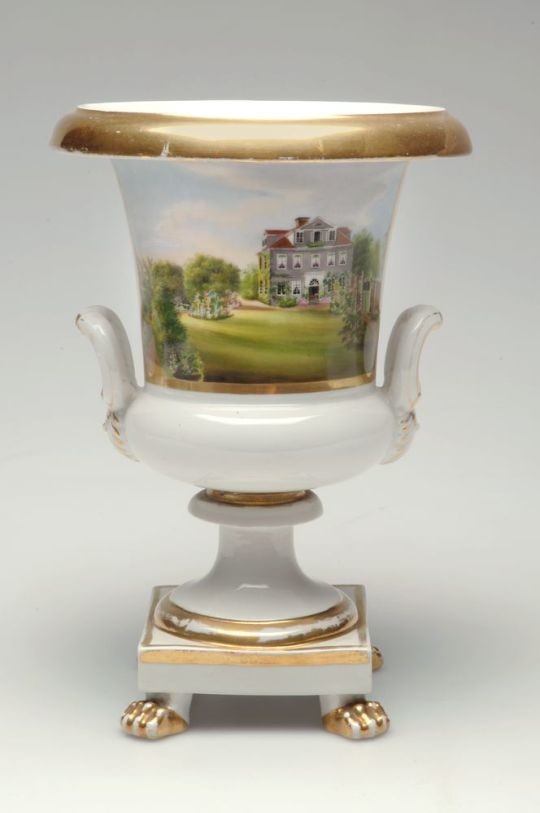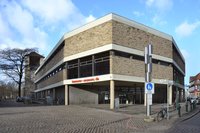Diese Ansichtsvase zeigt das Haus am Schiffgraben 5 in Hannover.
Die Vase steht auf vier Löwenfüßen. Der Gefäßkörper besteht unten aus einem ca. 3 cm hohen bauchigen Ring, an dem zwei horizontale Henkel gegenständig angesetzt sind. Darüber steigt die Wandung konisch an und endet in einem umgeschlagenen Kremprand.
Auf der Wandung ist in einem in Gold gerahmten Viereck die Ansicht eines großen grauen Hauses in einem Garten mit Blumenbeeten und Bäumen zu sehen. Es handelt sich um das Haus Schiffgraben Nr. 5, in dem der hannoversche Obersteuerrat Ernst Iffland (1789-1873) wohnte. Das Haus wurde Anfang des 19. Jahrhunderts „vor den Toren der Stadt“ gebaut. 1879/1880 wurde es abgebrochen, um Platz für das neue Ständehaus zu schaffen, heute Sitz des Niedersächsischen Finanzministeriums.
[FA]
en

